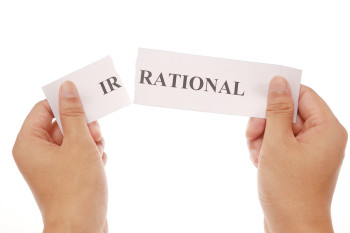Probability and rationality — trickier than you might think The Coin-tossing Problem My friend Bengt says that on the first day he got the following sequence of Heads and Tails when tossing a coin: H H H H H H H H H H And on the second day he says that he got the following sequence: H T T H H T T H T H Which day-report makes you suspicious? Most people I ask this question says the first day-report looks suspicious. But actually, both days are equally probable! Every time you toss a (fair) coin there is the same probability (50 %) of getting H or T. Both days Ben makes equally many tosses and every sequence is equally probable! The Linda Problem Linda is 40 years old, single, outspoken, and very bright. She majored in philosophy. As a student, she was
Topics:
Lars Pålsson Syll considers the following as important: Statistics & Econometrics
This could be interesting, too:
Lars Pålsson Syll writes Keynes’ critique of econometrics is still valid
Lars Pålsson Syll writes The history of random walks
Lars Pålsson Syll writes The history of econometrics
Lars Pålsson Syll writes What statistics teachers get wrong!
Probability and rationality — trickier than you might think
The Coin-tossing Problem
My friend Bengt says that on the first day he got the following sequence of Heads and Tails when tossing a coin:
H H H H H H H H H H
And on the second day he says that he got the following sequence:
H T T H H T T H T H
 Which day-report makes you suspicious?
Which day-report makes you suspicious?
Most people I ask this question says the first day-report looks suspicious.
But actually, both days are equally probable! Every time you toss a (fair) coin there is the same probability (50 %) of getting H or T. Both days Ben makes equally many tosses and every sequence is equally probable!
The Linda Problem
Linda is 40 years old, single, outspoken, and very bright. She majored in philosophy. As a student, she was deeply concerned with issues of discrimination and social justice, and also participated in anti-nuclear demonstrations.
Which of the following two alternatives is more probable?
A. Linda is a bank teller.
B. Linda is a bank teller and active in the feminist movement.
‘Rationally,’ alternative B cannot be more likely than alternative A. Nonetheless Amos Tversky and Daniel Kahneman reported — ‘Judgments of and by representativeness.’ In D. Kahneman, P. Slovic & A. Tversky (Eds.), Judgment under uncertainty: Heuristics and biases. Cambridge, UK: Cambridge University Press 1982 — that more than 80 per cent of respondents said that it was.
Why do we make such ‘irrational’ judgments in both these cases? Tversky and Kahneman argued that in making this kind of judgment we seek the closest resemblance between causes and effects (in The Linda Problem, between Linda’s personality and her behaviour), rather than calculating a probability, and that this makes alternative B seem preferable. By using a heuristic called representativeness, statement B in The Linda Problem seems more ‘representative’ of Linda based on the description of her, although from a probabilistic point of view it is clearly less likely.
